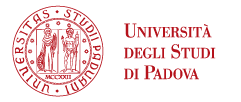Chemistry for life sciences
Synthesis and analysis of peptides and proteins; studies of photosynthetic systems via optic and magnetic spectroscopies.
Listed here below you can check the groups developing this research area's activities.
Analytical Chemistry
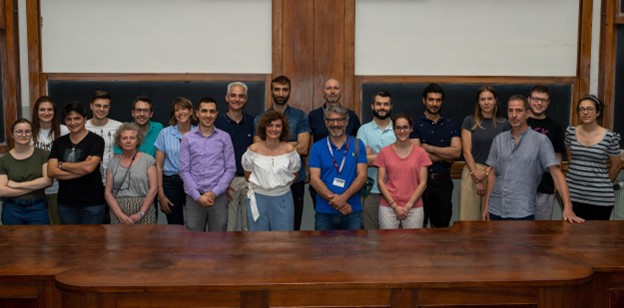
Prof. Paolo Pastore (paolo.pastore@unipd.it); prof. Denis Badocco (denis.badocco@unipd.it); prof. Sara Bogialli (sara.bogialli@unipd.it); dr. Luca Cappellin (luca.cappellin@unipd.it); prof. Valerio Di Marco (valerio.dimarco@unipd.it); dr. Gabriella Favaro (gabriella.favaro@unipd.it); prof. Marco Frasconi (marco.frasconi@unipd.it); prof. Andrea Tapparo (andrea.tapparo@unipd.it); dr. Marco Roverso (marco.roverso@unipd.it); dr. Alessandra Zanut (alessandra.zanut@unipd.it); dr. Fazel Abdolahpur Monikh (fazel.monikh@unipd.it).
The Analytical Chemistry Laboratories are equipped with a range of advanced instruments, such as high-resolution LC-MS (Q-Exactive by Thermo), ICP-MS (Agilent), GC-MS/MS (Thermo), and several others. These instruments are dedicated to various research lines, including:
- emerging contaminants in the environment and food;
- atmospheric chemistry;
- metal-ligand complexation in aqueous solutions for pharmaceuticals;
- applied analytical chemistry;
- optical and electrochemical sensors;
- nanostructured materials for sensing and organ-on-chips applications;
Within the group, a special focus lies on safe-by-design advanced materials, investigating adverse effects of nanomaterials on the environment and human health. This includes developing analytical methods for understanding nanomaterial behavior, exploring interactions with biological components, tracing nanomaterial movement in organisms, and applying them for environmental remediation and risk assessment.
Selected publications:
- An analytical workflow for dynamic characterization and quantification of metal-bearing nanomaterials in biological matrices.Nat Protoc 17, 1926–1952 (2022);
- Porous hydrogel scaffolds integrating Prussian Blue nanoparticles: a versatile strategy for electrochemical (bio)sensing, Sensors and Actuators B: Chemical 2023, 376, 132985;
- Chelation of Theranostic Copper Radioisotopes with S-Rich Macrocycles: From Radiolabelling of Copper-64 to In Vivo Investigation. Molecules 2022, 27, 4158;
- Exploring volatile organic compound emission from thermally modified wood by PTR-ToF-MS, Analyst, 2022,147, 5138-5148;
- Metallic functionalization of magnetic nanoparticles enhances the selective removal of Glyphosate, AMPA, and Glufosinate from surface water, Environmental Science: Nano, 2023, Just accepted paper;
Bio Organic Chemistry
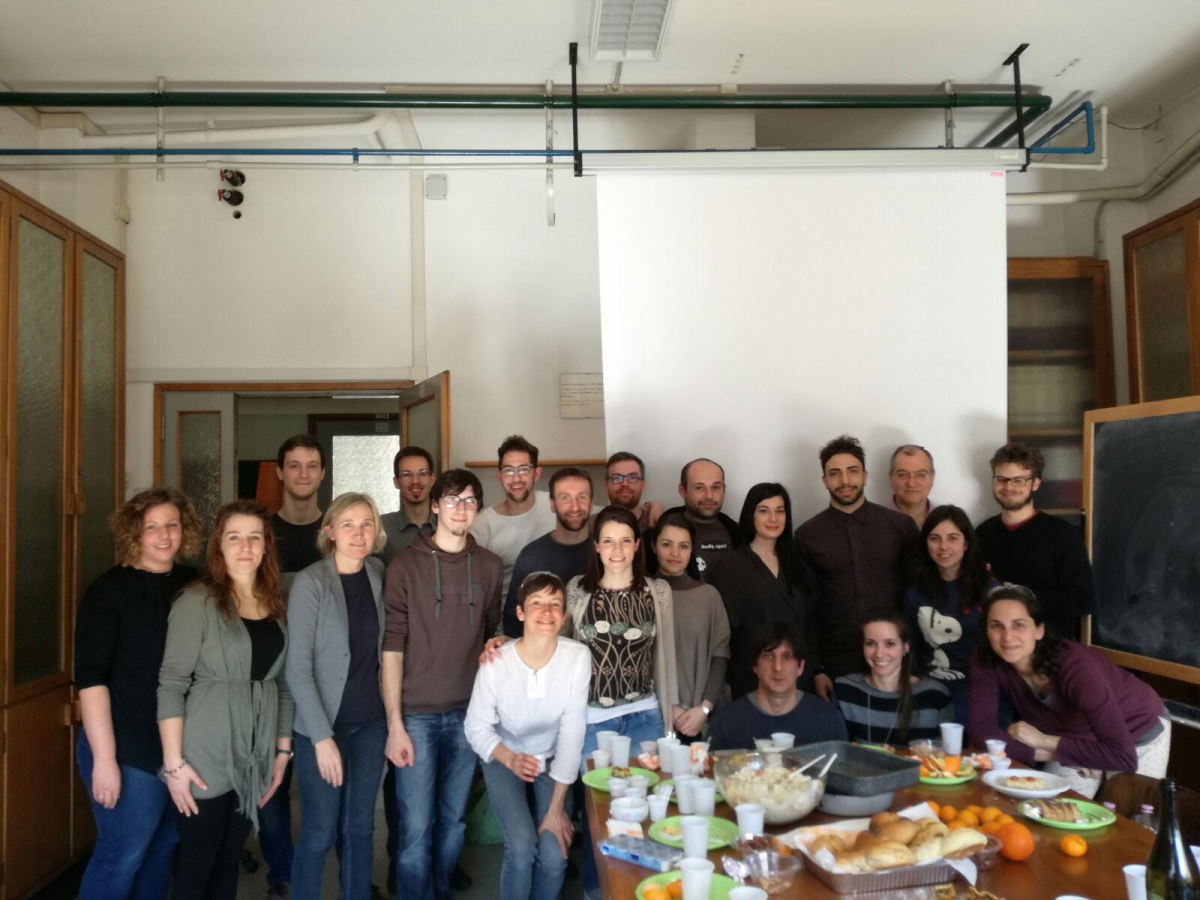
Dr. Barbara Biondi (barbara.biondi@unipd.it); Prof. Marta De Zotti (marta.dezotti@unipd.it); Prof. Fernando Formaggio (fernando.formaggio@unipd.it); Prof. Marina Gobbo (marina.gobbo@unipd.it); Prof. Alessandro Moretto (alessandro.moretto.1@unipd.it); Prof. Cristina Peggion (cristina.peggion@unipd.it)
The Bio Organic Chemistry group synthesizes and studies peptides of different origin and particularly those containing Cα,α-dialkyl amino acids.
The group is engaged in the following research lines:
- synthesis, conformation, mechanism of action and bioactivity (antibacterial and antitumor) of peptides and naturally-occurring peptaibiotics;
- antimicrobial photodynamic therapy;
- textiles functionalized with antibacterial peptides for biomedical applications;
- peptide nanotechnology: peptido-rotaxanes, peptide-decorated metal nanoparticles, self-assembled peptide polymers;
- synthesis and conformation of peptides with well-defined 3D-structures;
- peptide helices as rigid structural elements for spectroscopic studies and for electron transfer and photovoltaic applications.
- Albini F., Biondi B., Di Stasi A., Schivo A., Mardirossian M., Scocchi M., and Peggion C. Fragments of cathelicidins PMAP-36 and BMAP-27 and their D-enantiomers: Effects of all D substitutions on structure, protease resistance and antimicrobial properties. Bioorg. Chem, 63, 2025, 108715 (2025).
- Habrat Zoabi F., Zerihun M., Lizarovich R., Dalla Torre C., Davis L., Ertracht O., Barsheshet M., Atar S., Shalev D.E., De Zotti M., Senderowitz H., Qvit N. Inhibiting MARCH5/Mfn2 signaling as an alternative strategy to protect cardiomyocytes from hypoxia-induced mitochondrial dysfunction. Comp. Struct. Biotech. J., 27, 3045–3065 (2025).
- Fabbian S., Gabbatore L., Morbiato L., De Zotti M., Giorgio V., Battistutta R., Giachin G., Sosic A., Bellanda M. The OSCP subunit of ATP Synthase is a dimer in solution: strategy to induce the monomeric protein as a new tool for drug discovery. J. Mol. Biol., 437, 169267 (2025).
- Messina G.M.L., De Zotti M., Siano A.S., Mazzuca C., Marletta G., Palleschi A. Dimer Is Not Double: The Unexpected Behavior of Two-Floor Peptide Nanosponge. Molecules, 30, 47 (2025).
- B. Biondi, F. Formaggio, C. Toniolo, C. Peggion, and M. Crisma, “ π-Turns in Peptides: A Crystal-State Literature Survey,” J. Pept. Sci., 31, e70036 (2025).
- Kubitzky S., Lettieri R., Passaretti E., Venanzi M., De Zotti M.*, Mazzuca C., Placidi E., Gatto E. A Supramolecular Wire Able to Self-Assemble on Gold Surface: Controlling the Film Length to Optimize the Device Lifetime and Electron Transfer Efficiency. Adv. Mater. Interfaces, 12, 2400418 (2025).
updated October 26th, 2025
Biomolecular Structures
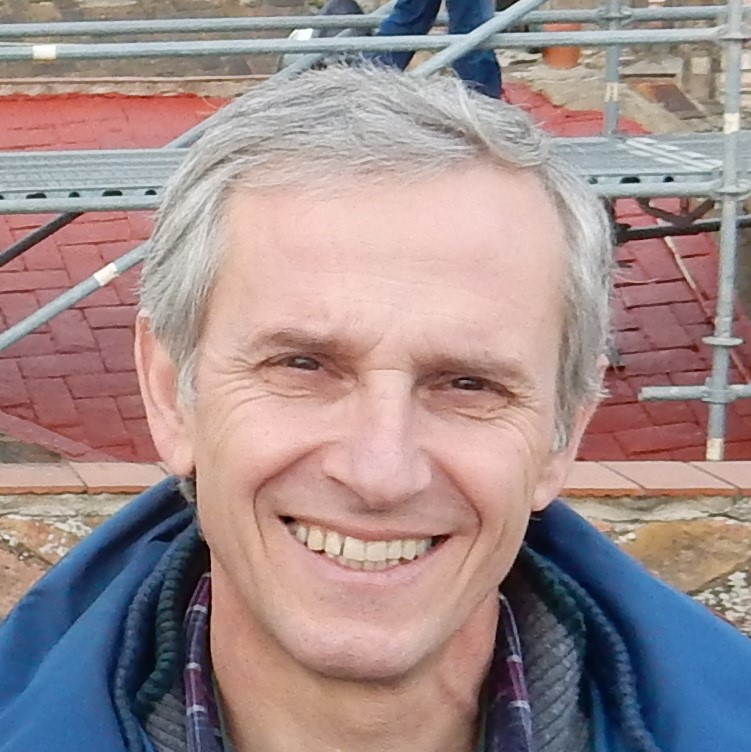 |  |  | 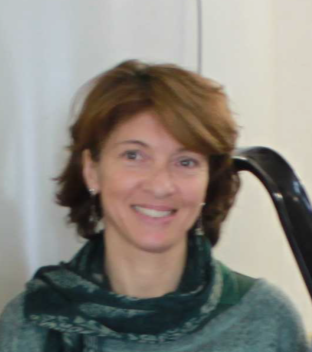 |  | 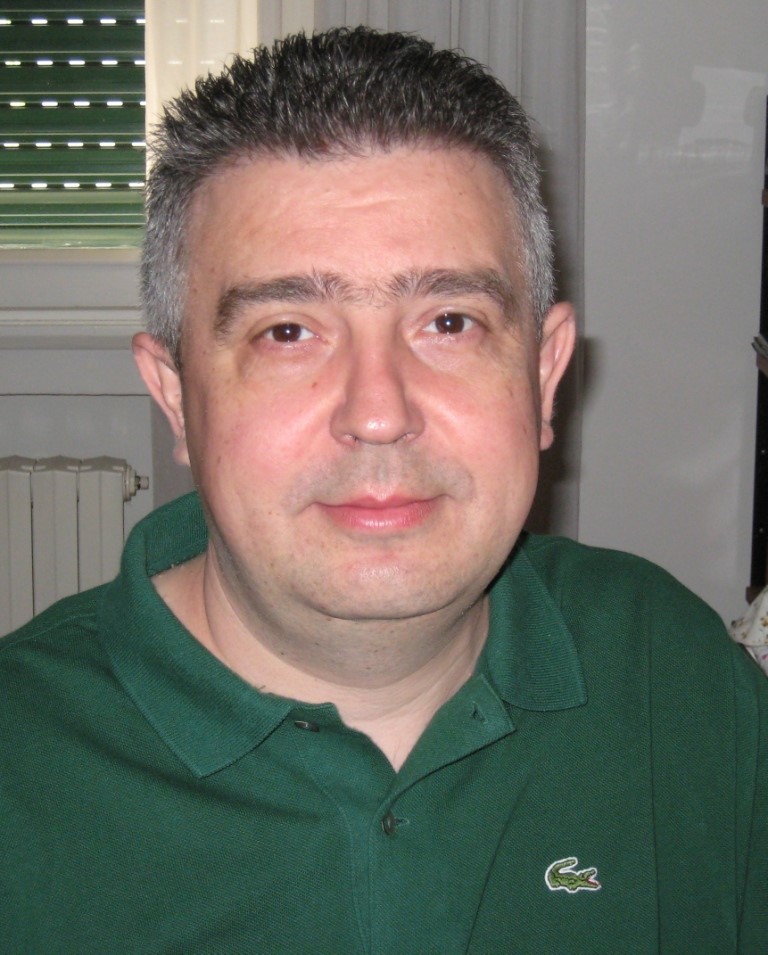 |
Stefano Mammi (stefano.mammi@unipd.it); Roberto Battistutta (roberto.battistutta@unipd.it); Massimo Bellanda (massimo.bellanda@unipd.it);
Elisabetta Schievano (elisabetta.schievano@unipd.it); Andrea Calderan (andrea.calderan@unipd.it); Paolo Ruzza (paolo.ruzza@unipd.it); Gabriele Giachin (gabriele.giachin@unipd.it)
The research of the Biomolecular Structure Group is addressed to the study of peptides and proteins. We investigate their chemical and structural properties with the goal to elucidate the molecular mechanisms at the basis of their biological activity in natural processes. We then apply this knowledge to try to modify the properties of selected targets (for instance for biotechnological applications) or to correct them when correlated to pathological states. The main experimental techniques we employ are multidimensional NMR and protein crystallography. Another focus of our research is the application of NMR, in combination with multivariate statistical analysis, to the metabolomic study of complex matrices such as food extracts and biological fluids. The applications range from the development of new methods to the traceability of food products to the development of new analytical tools to establish the in vivo effects of exogenous substances. Our main research lines are the following:
- Structural, functional and inhibition studies of oncogenic protein kinases CK2 and CDK2;
- Structural and functional characterization of SulP/SLC26 anion transporters;
- Enzyme engineering for industrial applications;
- Structure and interactions of proteins involved in the peculiar redox metabolism of pathogenic organisms;
- Fragment-based drug discovery by NMR and crystallography;
- Metabolomic analysis of food extracts and biological fluids;
- Traceability of foodstuff;
- Synthesis and characterization of peptide and peptidomimetics.
- Molecular architecture and the structural basis for anion interaction in prestin and SLC26 transporters, Nat. Comm., 2014, 5, 3622-35.
- Objective Definition of Monofloral and Polyfloral Honeys Based on NMR Metabolomic Profiling, J. Agric. Food Chem., 2016, 64, 3645-3652.
- Interactions of GFAP with ceftriaxone and phenytoin: SRCD and molecular docking and dynamic simulation, Biochim. Biophys. Acta-Gen. Subj., 2016, 1860, 2239-2248.
- NMR Quantification of Carbohydrates in Complex Mixtures. A Challenge on Honey, Anal. Chem., 2017, 89, 13405-13414.
- Polyamine-Based Thiols in Trypanosomatids: Evolution, Protein Structural Adaptations, and Biological Functions. Antioxid. Redox Signal., 2018, 28, 463– 486.
Computational Chemistry & (bio)Catalysis
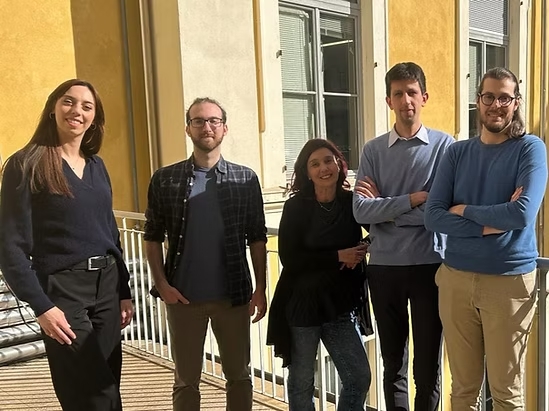
The research of the C 2 bC Group aims at elucidating central physical phenomena in chemistry rooted in the properties of atoms and molecules. A deep rationalization and interpretation of experimental evidence is pursued through improvement of the fundamental description of chemical systems (chemical theory), and the applications of mnew and existing techniques to chemical, physical and biological problems (chemical computation), with particular attention to health and sustainability.
Among the topics of interest, we investigate the mechanistic details of thiol-based proteins and chalcogen-based biomimics and drugs, the structural and reactivity properties of transition metalcomplexes for application in catalysis as well as in medicine, mechanistic and energy features of elementary reactions important in chemistry and biochemistry, the detailed mechanisms of radical reactions involved in ROS scavenging processes. Multiscale protocols are tailored to the different problems ranging from accurate quantumchemistry methodologies to classic mechanics and dynamics, and, more recently, combined to machine learningstrategies.
The ultimate goal of our research is to predict the chemical properties of a chemical system in advance of the experiment, for a rational design of functional molecules and materials assisted by computer.
Selected publications include:
A. A. Madabeni, D. Tanini, A. Capperucci, L. Orian Untangling the catalytic importance of Se oxidation
state in organoselenium-mediated oxygen-transfer reactions: the conversion of aniline to
nitrobenzene Chem. Science online (2024)
B. D. Zeppilli, A. Madabeni, L. Sancineto, L. Bagnoli, C. Santi, L. Orian Role of Group 12 metals in the
reduction of H 2 O 2 by Santi’s reagent: a computational mechanistic investigation Inorg. Chem.
62(42), 17288-17298 (2023)
C. M. Dalla Tiezza, F. M. Bickelhaupt, L. Flohé, M. Maiorino, F. Ursini, L. Orian, A dual attack on the
peroxide bond. The common principle of peroxidatic cysteine or selenocysteine residues Redox Biol.
34, 101540 (2020).
D. M. Bortoli, M. Torsello, F. M. Bickelhaupt, L. Orian Role of the chalcogen (S, Se, Te) in the oxidation
mechanism of the glutathione peroxidase active site ChemPhysChem, 18, 2990-2998 (2017).
group website
EPR Spectroscopy
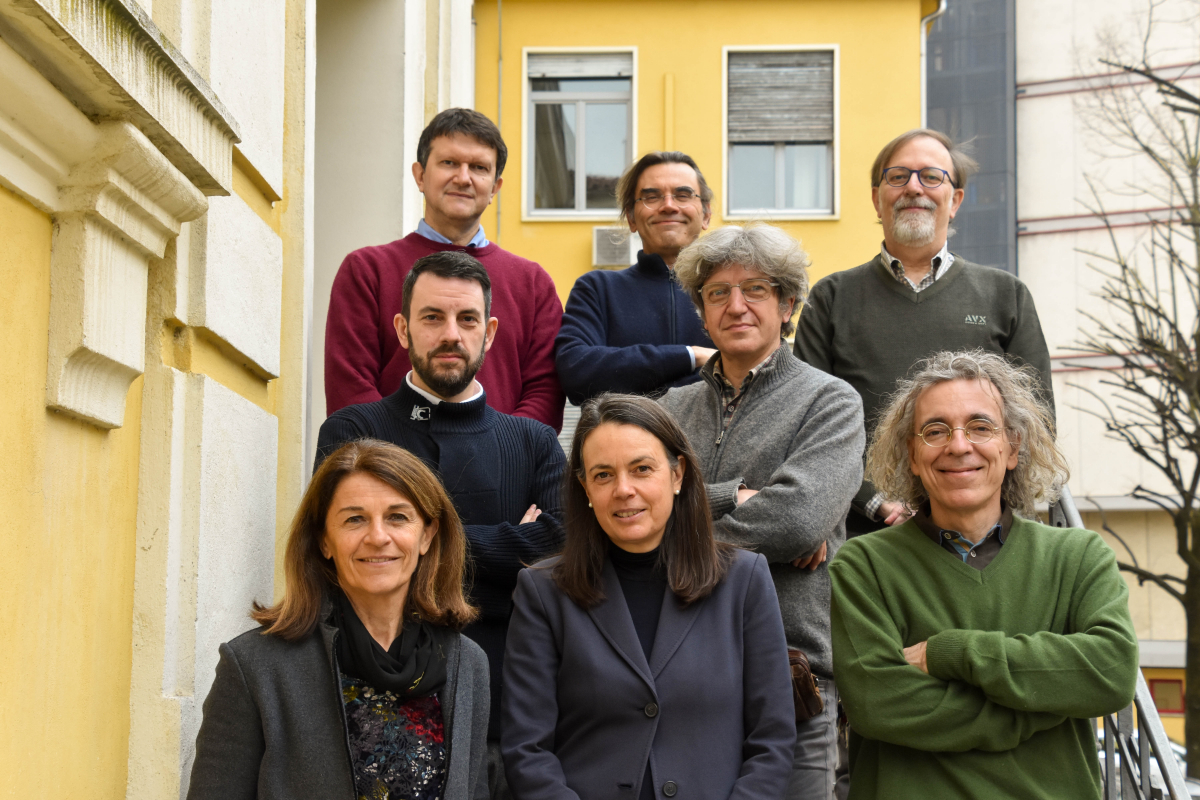
Prof. Donatella Carbonera (donatella.carbonera@unipd.it); Prof. Marilena Di Valentin (marilena.divalentin@unipd.it); Prof. Antonio Toffoletti (antonio.toffoletti@unipd.it); Prof. Lorenzo Franco (lorenzo.franco@unipd.it); Prof. Marco Ruzzi (marco.ruzzi@unipd.it); Dr. Alessandro Agostini (alessandro.agostini.1@unipd.it); Dr. Alfonso Zoleo (alfonso.zoleo@unipd.it); Dr. Antonio Barbon (antonio.barbon@unipd.it); Dr. Marco Bortolus (marco.bortolus@unipd.it): Dr. Gabriele Stevanato (gabriele.stevanato@unipd.it).
The research activity of the group is focused on the development and application of Electron Paramagnetic Resonance (EPR) techniques to Material Science (graphene, metal nanoparticles, organic photovoltaics, cultural heritage materials), and Biology (natural and artificial photosynthetic systems, hydrogenases and bio-inspired analogs for the bio-production of hydrogen, protein dynamics as detected by spin labelling techniques).
The facilities of the EPR Laboratory include the following spectrometers:
- X/Q-band EPR with CW, pulsed, ENDOR, PELDOR and time-resolved accessories
- X-band EPR with CW, pulsed, ENDOR, and time-resolved accessories
- X-band CW-EPR for routine experiments
- X-band time-resolved EPR for analysis of light-induced processes
- Optically detected Magnetic Resonance (ODMR).
- UV-Vis.
We also have available an FPLC for protein purification
- Altering the exciton landscape by removal of specific chlorophylls in monomeric LHCII provides information on the sites of triplet formation and quenching by means of ODMR and EPR spectroscopies, BBA Bioenerg., 2021, 1862, 148481.
- Orientation-Selective and Frequency-Correlated Light-Induced Pulsed Dipolar Spectroscopy, J. Chem. Phys. Lett., 2021, 12, 3819 - 3826.
- Spin–Orbit Charge-Transfer Intersystem Crossing of Compact Naphthalenediimide-Carbazole Electron-Donor–Acceptor Triads, J. Phys. Chem. B, 2021, 125, 10813 - 10831.
- Understanding and controlling the efficiency of Au24M(SR)18 nanoclusters as singlet-oxygen photosensitizers, Chem. Sci., 2020, 11, 3427 - 3440.
- Quantification of Photophysical Processes in All-Polymer Bulk Heterojunction Solar Cells, Sol. RRL, 2020, 4, 2000181.
Updated May 6th, 2022
Hybrid molecules and materials - HyMolMat
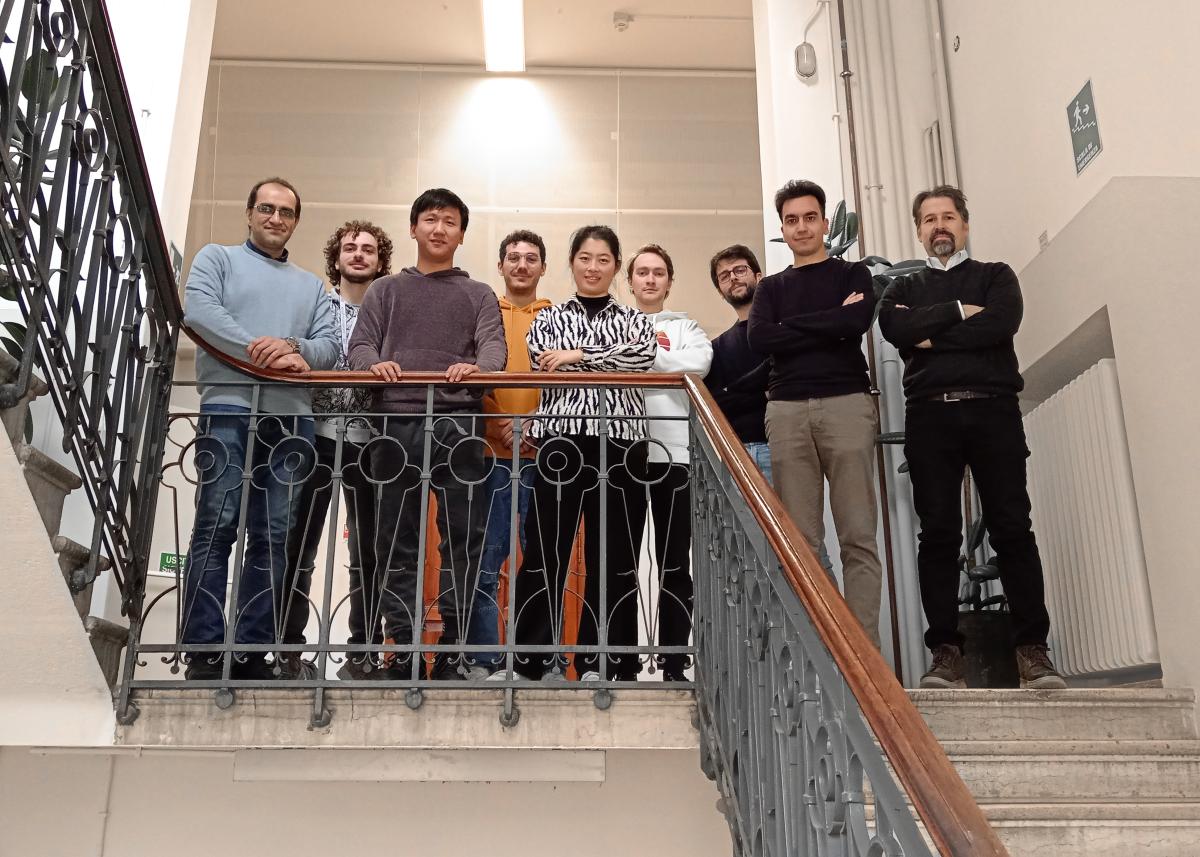
The research activities of the group are focused on the design, synthesis, and characterization of hybrid organic-inorganic compounds:
1. Metal complexes and molecular compounds are developed for applications in biomimetic catalysis and nanomedicine. Specifically, polyoxometalates (tungstates, molybdates, and vanadates) are functionalized with peptides or other organic moieties to confer recognition capabilities towards biological targets. Spectroscopic techniques (NMR, FT-IR, UV-vis, fluorimetry, circular dichroism), cyclic voltammetry, and dynamic light scattering are employed to investigate the behavior of these compounds in solution.
2. Composite materials incorporating nanomaterials (such as halloysite nanotubes, nanocellulose, and metal-organic frameworks) within polymeric matrices are developed. Whenever possible, starting materials are sourced from waste materials (e.g., textiles). These novel materials are functionalized with catalytic units to foster green chemical transformations. Electron microscopies (TEM, SEM), Thermal characterizations (TGA, DSC), surface analysis (XRD, Raman, Z-potential) are applied for their characterization, while HPLC, GC, NMR are used to monitor their activity.
References
1) Bortolus, M., Kotynia, A., Saielli, G., Ruzza, P., Di Valentin, M., Carraro, M., Brasuń, J. Detailed investigation of the binding abilities of the heterodomain of a multiHis cyclopeptide toward Cu(II) ions (2024) J. Pept. Sci. DOI: 10.1002/psc.3568
2) Yu, J., Boudjelida, S., Galiano, F., Figoli, A., Bonchio, M., Carraro, M.Porous Polymeric Membranes Doped with Halloysite Nanotubes and Oxygenic Polyoxometalates (2022) Adv. Mater. Interf., 9 (11), art. no. 2102152.
3) Yu, J., Niedenthal, W., Smarsly, B.M., Natile, M.M., Huang, Y., Carraro, M. Au nanoparticles supported on piranha etched halloysite nanotubes for highly efficient heterogeneous catalysis (2021) Appl. Surf. Sci., 546, art. no. 149100.
4) Tagliavini, V., Honisch, C., Serratì, S., Azzariti, A., Bonchio, M., Ruzza, P., Carraro, Enhancing the biological activity of polyoxometalate-peptide nano-fibrils by spacer design (2021) RSC Adv., 11 (9), pp. 4952-4957.
Laser Spectroscopy and Nanophotonics
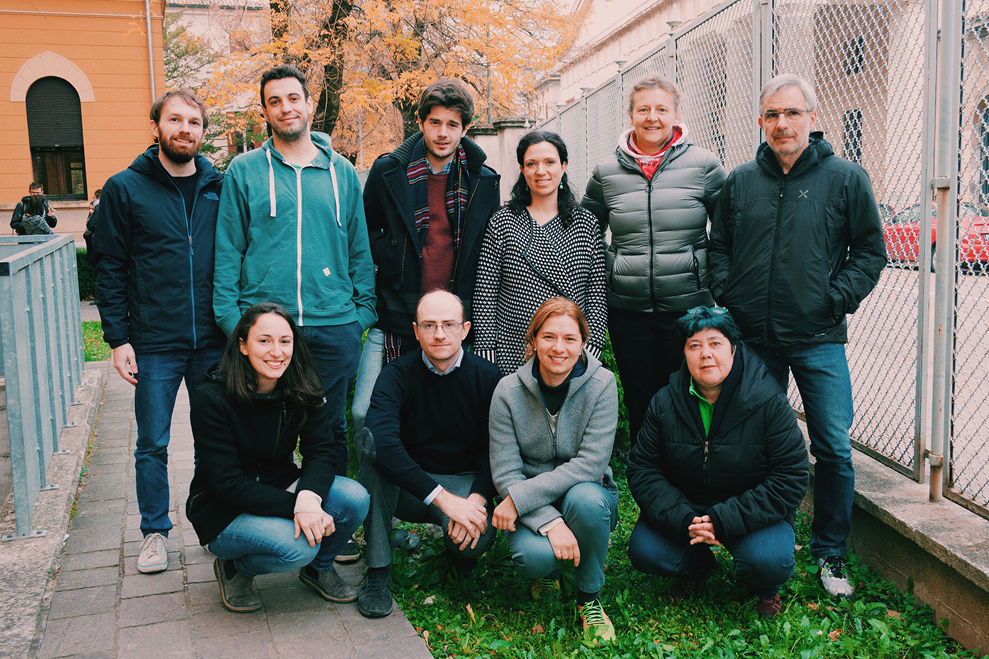
Elisabetta Collini (elisabetta.collini@unipd.it); Camilla Ferrante (camilla.ferrante@unipd.it); Danilo Pedron (danilo.pedron@unipd.it); Roberto Pilot (roberto.pilot@unipd.it); Raffaella Signorini (raffaella.signorini@unipd.it).
The group has a long-standing experience in the investigation of inter- and intra-molecular charge and energy transfer processes, ultrafast coherent and incoherent dynamics, and nonlinear optical response in complex systems like molecular crystals, molecular aggregates, metal and semiconductor nanoparticles. To this end we have developed experimental set-ups for time and frequency resolved optical spectroscopy experiments: 2D-electronic spectroscopy with fs resolution, transient absorption in the fs and ps time domain, time resolved fluorescence microscopy: FLIM and FCS, Raman and SERS spectroscopy, multiphoton absorption through Z-scan and fluorescence excitation experiments.
- E. Collini,2D Electronic Spectroscopic Techniques for Quantum Technology Applications, J. Phys. Chem. C, 2021, 125, 3096-13108
- V. Zani, D. Pedron, R. Pilot, and R. Signorini, Contactless Temperature Sensing at the Microscale Based on Titanium Dioxide Raman Thermometry, Biosensors, 2021, 11, 102.
- N. Peruffo, E. Collini et al., Selective switching of multiple plexcitons in colloidal materials: directing the energy flow at the nanoscale. Nanoscale, 2021, 13, 6005-6015.
- V. Weber , L. Brigo, G. Brusatin, G. Mattei, D Pedron, R. Pilot and R. Signorini, Hybrid Sol-Gel Surface-Enhanced Raman Sensor for Xylene Detection in Solution, Sensors, 2021, 21, 7912.
- M. Righetto, A. Privitera, I. Fortunati, D. Mosconi, M. Zerbetto, M. L. Curri, M. Corricelli, A. Moretto, S. Agnoli, L. Franco, R. Bozio, C. Ferrante, Spectroscopic insights into carbon dot systems, J. Phys. Chem. Lett., 2017, 8, 2236-2242
Macromolecular and Organic Chemistry
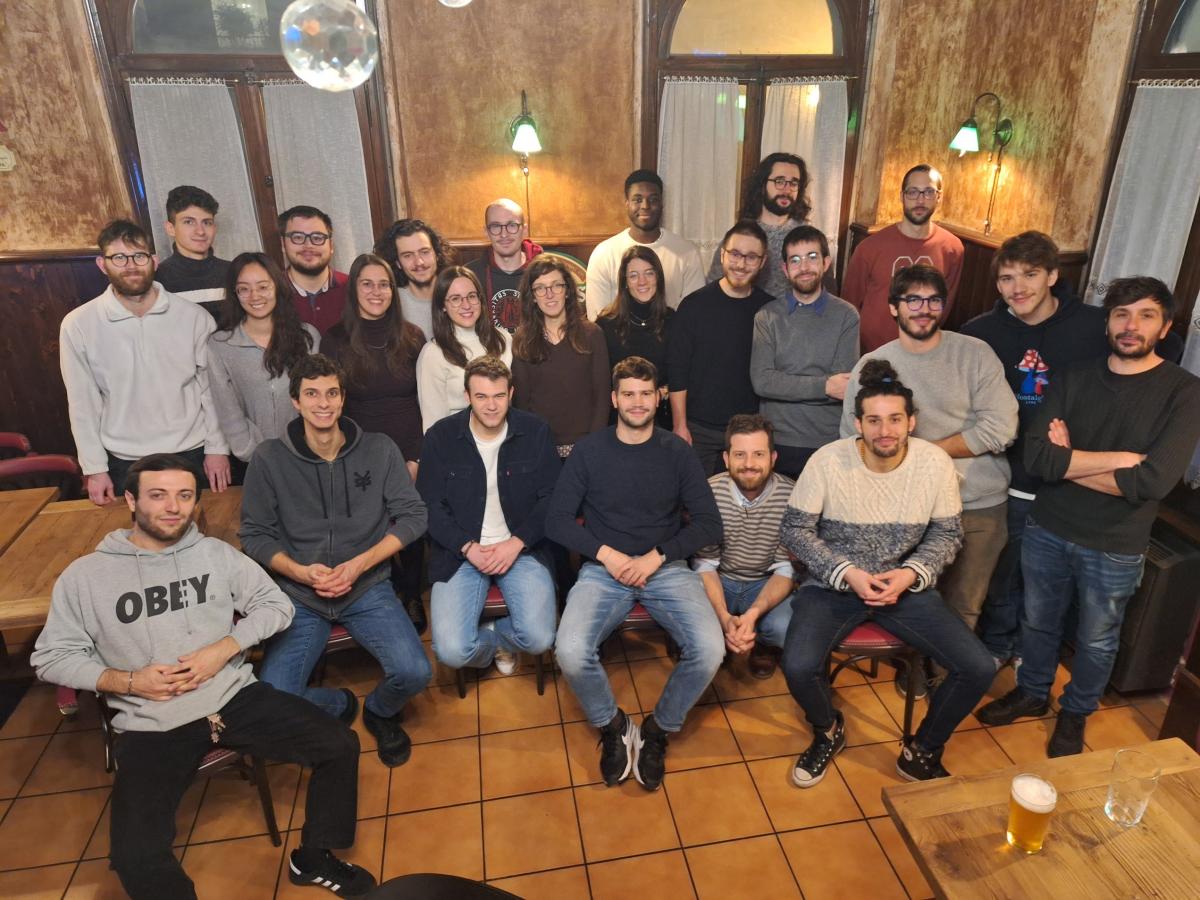
Prof Edmondo Benetti (edmondo.benetti@unipd.it), Dr. Francesca Lorandi (francesca.lorandi@unipd.it), Dr. Cristian Pezzato (cristian.pezzato@unipd.it)
Nanocarbon, PLasma chemistry and fUnctional Soft materials (N-PLUS)
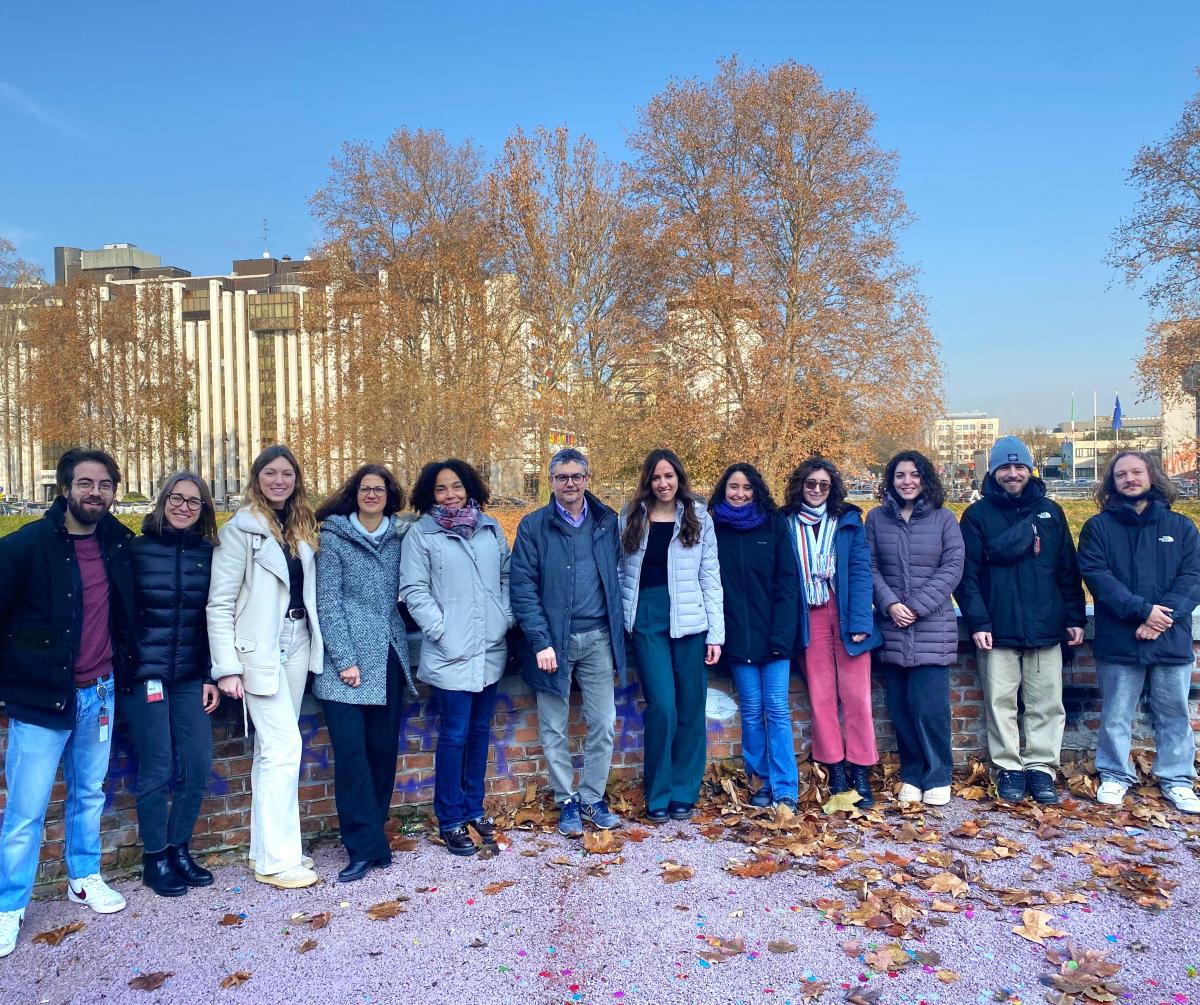
prof. Enzo Menna (enzo.menna@unipd.it) - prof. Ester Marotta (ester.marotta@unipd.it) - prof. Miriam Mba (miriam.mba@unipd.it)
Following different strategies, based on organic chemistry, the research activity of the group provides contributions to the advancement of knowledge in the fields of Energy, Environment and Tissue Engineering, through the investigation of specific interactions
of molecules and materials. These include interactions with cells, pollutants, light or atmospheric plasma or supramolecular interactions between molecules.
Competences in the team include the functionalization of carbon nanotubes and graphene, the synthesis of functional peptide based self-assembling materials and the study of chemical processes activated by cold atmospheric plasma.
The synergistic integration of our diverse skills and knowledge bolsters interdisciplinary research topics such as the followings.
Synthesis of nanocomposite materials enhancing photoinduced charge separation or transport for 3rd generation photovoltaics. Peptide-based soft materials and conjugated organic molecules with optoelectronic properties. Biomimetic nanocomposite hydrogel scaffolds for the growth and differentiation of cells and for tissue regeneration. Recyclable adsorbent nanomaterials for the removal of water pollutants.
Setting of plasma-based advanced processes for the degradation of poly- and perfluoroalkyl substances (PFAS) and other organic pollutants in water or adsorbed on activated carbon. Main characterization techniques used in the group are NMR, circular dichroism, UV-Vis-NIR absorption and emission, Raman, HPLC/UV-Vis, LC/MS, TGA and DSC.
Selected publications
• Enhanced Adsorption of Methylene Blue Dye on Functionalized Multi-Walled Carbon Nanotubes, Nanomaterials, 2024,14, 522. DOI: 10.3390/nano14060522
• Modified Carbon Nanotubes Favor Fibroblast Growth by Tuning the Cell Membrane Potential, ACS Appl. Mater. Interfaces, 2024, 16, 3093-3105. DOI: 10.1021/acsami.3c14527
• Self-Assembly and Electrical Conductivity of a New 1 benzothieno 3,2-b 1-benzothiophene (BTBT)-Peptide Hydrogel, Molecules, 2023, 28, 2917. DOI: 10.3390/molecules28072917
• Products, reactive species and mechanisms of PFOA degradation in a self-pulsing discharge (SPD) plasma reactor, Chemosphere, 2023, 341, 139972. DOI: 10.1016/j.chemosphere.2023.139972
• Organic functionalized carbon nanostructures for solar energy conversion, Molecules, 2021, 26, 5286. DOI: 10.3390/molecules26175286
group website
Nanostructures & (Bio)molecules Modeling
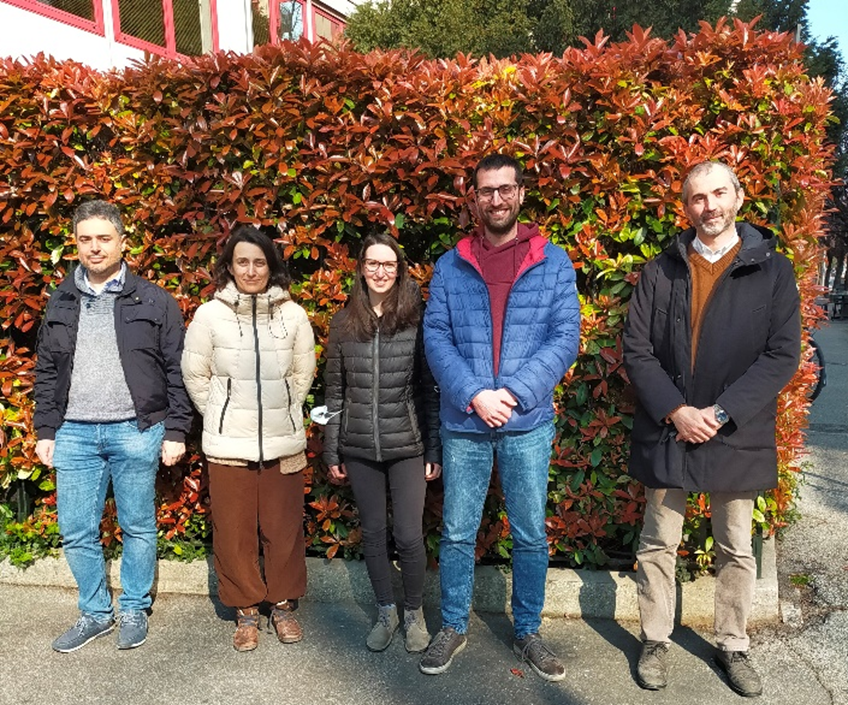
Stefano Corni (stefano.corni@unipd.it); Agostino Migliore (agostino.migliore@unipd.it)
The group develops and applies multiscale computational methods to describe hybrid systems, such as organic and biological molecules interacting with inorganic nanoparticles. The methods used range from ab initio atomistic calculations (also on quantum computers) and classical molecular dynamics to classical and quantum electrodynamics. The main research topics are:
-ultrafast spectroscopy and optical properties of molecules close to plasmonic nanostructures & in solution.
-the quantum nature of plasmonics excitations at the nanoscale.
-charge and energy transfer in (bio)molecules and in nanoscale structures
-the interactions of inorganic surfaces and nanoparticles with proteins.
The group is currently funded by EU H2020 and HE projects in which light-biomolecule interactions play a major role.
- Strong coupling between localized surface plasmons and molecules by coupled cluster theory, Nano Letters, 2021, 21, 6664-6670
- The physical origin of a photon-number parity effect in cavity quantum electrodynamics, Results in Physics, 2021, 30, 104690
- Charge transfer between [4Fe4S] proteins and DNA is unidirectional. Implications for biomolecular signaling, Chem, 2019, 5, 122-137
- Manipulating azobenzene photoisomerization through strong light–molecule coupling, Nature Communications, 2018, 9, 4688-9
- How to Identify Plasmons from the Optical Response of Nanostructures, ACS Nano, 2017, 11, 7321–7335.
Nanostructures & Optics
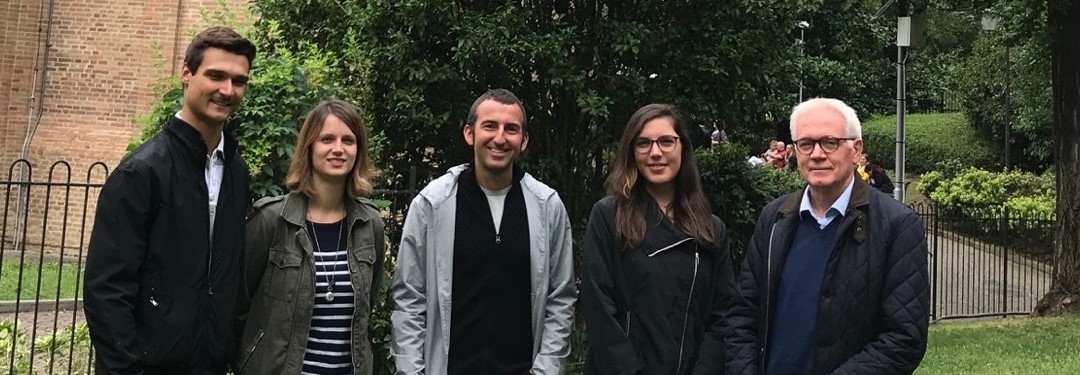
Prof. Moreno Meneghetti (moreno.meneghetti@unipd.it); dr. Lucio Litti (lucio.litti@unipd.it)
Research activities at NOL are on the synthesis, characterization, modelling and applications of nanostructures in nanobiotechnology and related fields and for new nanomaterials for solar energy conversion (photovoltaic and thermal) and cultural heritage. Nanostructures are usually obtained by laser ablation of bulk solids under solvents. Plasmonic properties of metal nanoparticles are exploited in particular for the SERS (surface enhanced Raman scattering) effect, whereas the magnetic properties for magnetophoresis. Finite element based simulations are used to model the optical responses of complex nanostructured assemblies. For the nanobiotechnology field the SERS technique is used for applications like tumor cell targeting and identification, functionalizing plasmonic and magneto-plasmonic nanostructures with antibodies and engineered peptides. Nanobiotechnology, but also environmental applications are developed also using µfluidic devices to be integrated in new portable sensor technologies. Raman and SERS nanostructures are exploited also in cultural heritage studies for the identification of pigments, dyes, and other organic materials present in artworks.
- Predictions on the SERS enhancement factor of gold nanosphere aggregate samples, Physical Chemistry Chemical Physics, 2019, 21, 15515 – 15522.
- A surface enhanced Raman scattering based colloid nanosensor for developing therapeutic drug monitoring, Journal of Colloid and Interface Science, 2019, 533, 621 – 626.
- Safe core-satellite magneto-plasmonic nanostructures for efficient targeting and photothermal treatment of tumor cells, Nanoscale, 2018, 10, 976–984.
- Enhanced EGFR Targeting Activity of Plasmonic Nanostructures with Engineered GE11 Peptide, Adv. Healthcare Mater., 2017, 6, 1700596.
- High-Quality, Ligands-Free, Mixed-Halide Perovskite Nanocrystals Inks for Optoelectronic applications, Advanced Energy Material, 2017, 7, 1601703.
updated 1st October 2019
Organic Synthesis and Materials
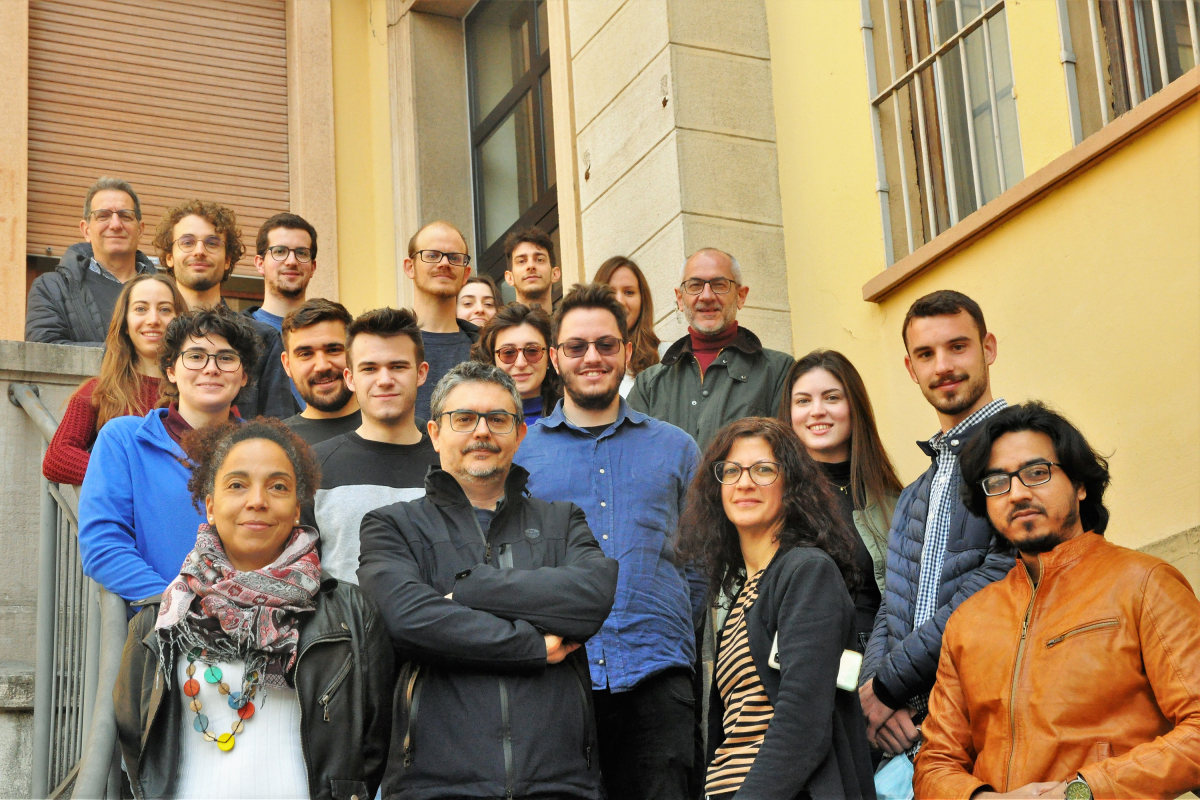
Prof. Tommaso Carofiglio (tommaso.carofiglio@unipd.it); Prof. Michele Maggini (michele.maggini@unipd.it); Dr.Luka Đorđević (luka.dordevic@unipd.it); Kui Zeng (kui.zeng@unipd.it)
Organic synthesis towards functional materials is at heart of the group, whose research focuses mainly on the chemical and plasma functionalization of carbon nanostructures for solar energy conversion, environmental and biomedical applications, the use of nanocellulose as a platform for bio-inspired functional materials and the preparation of functional supramolecular gels. We often use the microfluidics toolbox to study reactions or surface absorption kinetics, the controlled functionalization of nanosystems or the batch-to-flow transposition of active pharmaceutical ingredients of industrial interest. Main characterization techniques for organic synthesis and materials, including high-field and solid-state NMR, NIR absorption, TGA and DSC thermal analysis, AFM-STM at ambient conditions, benchtop flow reactors and cleanroom facilities are commonly accessed by the group components.
- Mild Microfluidic Approaches to Oxide Nanoparticles Synthesis, Chem.Eur.J., 2022, 28, e202103132
- Graphene-Based Scaffolds for Regenerative Medicine, Nanomaterials, 2021, 11, 404.
- Metal Cation Triggered Peptide Hydrogels and Their Application in Food Freshness Monitoring and Dye Adsorption, Gels, 2021, 7, 85
- Achieving selectivity in porphyrin bromination through a DoE-driven optimization under continuous flow conditions, J. Flow Chem., 2021, 11, 163-169.
- Comparative performance assessment of plasma reactors for the treatment of PFOA; reactor design, kinetics, mineralization and energy yield. Chem. Eng. J., 2020, 382, 123031.
Updated: April 8th, 2022
Physical Chemistry of Materials

Prof. Fosca Conti (fosca.conti@unipd.it)
The Physical Chemistry of Materials group is oriented to international collaborations, especially with European and Asian institutions. The research focuses on the characterization of materials. Two main classes of chemical systems are considered:
- Materials for renewable energies and circular economy,
- Materials for microelectronics and artificial intelligence.
Physical-chemical properties of electro and/or photoactive molecular systems are investigated to suggest innovative devices to support green and sustainable developments and advanced and digitalized systems. Research topics include dynamics of chemical reaction networks, stress and aging effects, heat and mass transfer processes, interfacial and bulk mechanisms, biomaterials with algae and fungi utilization.
- Formic acid and formate salts for chemical vapour deposition of copper on glass substrates at atmospheric pressure, New Journal of Chemistry, 2021, 45, 20133-20139.
- Capture, storage and utilization of carbon dioxide by microalgae and production of biomaterials, Environmental and Climate Technologies, 2021, 25, 574-586.
- Die-Attach Bonding with Etched Micro Brass Metal Pigment Flakes for High-Power Electronics Packaging, ACS Applied Electronic Materials, 2021, 3, 4587-4603.
- Electrical Conductivity and Water Effects in Phosphoric Acid Solutions for Doping of Membranes in Polymer Electrolyte Fuel Cells, Environmental and Climate Technologies, 2021, 25, 467-478.
- Thermomechanical stress in GaN-LEDs soldered onto Cu substrates studied using finite element method and Raman spectroscopy, Journal of Raman Spectroscopy, 2020, 51, 2083-2094.
updated April 26th, 2022
Physical Chemistry of Nano and Organometallic Materials
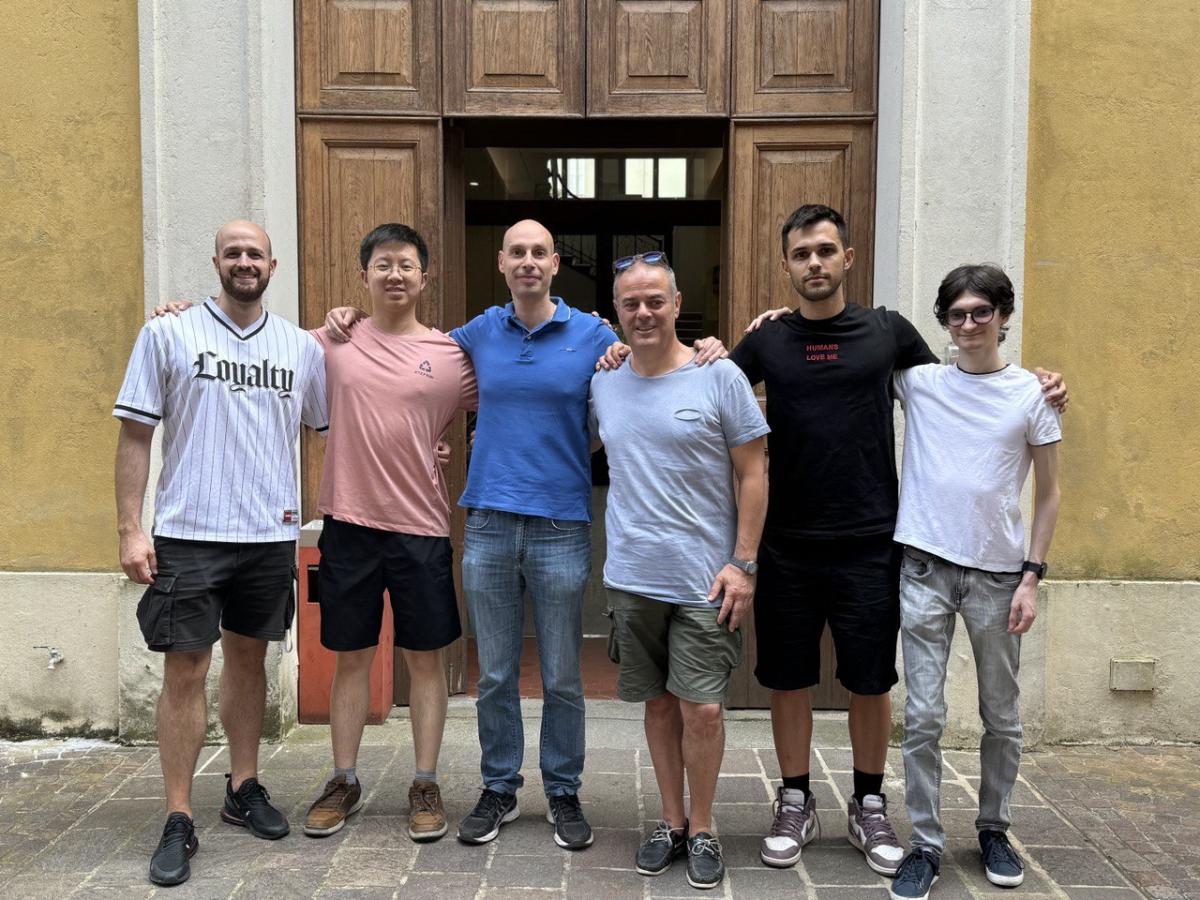 |
Saverio Santi (saverio.santi@unipd.it); Vincenzo Amendola (vincenzo.amendola@unipd.it); Clara Maria Goncalves De Faria (claramaria.goncalvesdefaria@unipd.it)
PHYNOM members investigate the synthesis, properties and applications of nano and organometallic materials. PHYNOM is organized in two units.
The research of the Physical Organometallic Chemistry unit is aimed at the spectroelectrochemical study of the optical and redox properties of ad hoc synthetized (multi)ferrocenyl systems in which the metal-to-metal charge transfer is mediated by different organic backbones, such as peptides, aromatic polycycles and photochromic molecules.
The Laser Assisted Synthesis and Plasmonics unit focuses on laser generation of colloids to produce plasmonic and other multifunctional nanoparticles for photonics, sensor science, nanomedicine, catalysis and related fields. Mechanistic aspects of laser synthesis in liquids, which include laser ablation, laser fragmentation and laser melting, are also investigated.
- A quarter-century of nanoparticle generation by lasers in liquids: Where are we now, and what’s next?, J. Coll. Interf. Sci., 2017, 489, 1-2.
- Benzodithiophene and Benzotrithiophene as π-Cores for Two- and Three-Blade Propeller-Shaped Ferrocenyl-Based Conjugated Systems, Eur. J. Org. Chem., 2017, 5966-5974.
- Hydrogen-Bond-Assisted, Concentration-Dependent Molecular Dimerization of Ferrocenyl Hydantoins, Organometallics, 2017, 36, 2190-2197.
- Surface plasmon resonance in gold nanoparticles: a review, J. Phys.: Condens. Matter, 2017, 29, 203002.
- Enhanced Electrocatalytic Oxygen Evolution in Au–Fe Nanoalloys, Angew. Chem. Int. Ed., 2017, 56, 6589-6593.
Polymer Science
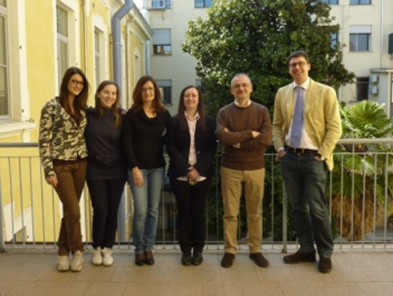 |
Carla Marega (carla.marega@unipd.it), Valerio Causin (valerio.causin@unipd.it)
In the labs of the Polymer Science group, different kinds of polymers and nanocomposites are studied, focusing particularly on their morphological and structural aspects (crystallization, lamellar morphology, polymorphism). The study, conducted on different scales, allows to obtain a global and complete picture of the considered materials. In fact, by wide angle X-ray diffraction (WAXD) the molecular structure, the type of crystalline cell and the dimensions of crystallites are studied, by small angle X-ray scattering (SAXS) and electron microscopy the lamellar morphology is investigated. From acquired diffractograms, in order to obtain the crystallinity degree, lamellar thicknesses and distributions, sophisticated computer software is used. Once characterization data have been obtained as a function of process or formulation parameters, the influence of these latter factors on polymer morphology and physical-mechanical properties is determined, with the purpose of obtaining a structure-property correlation to be used in the design of materials. The study is completed by thermal analysis (DSC and simultaneous DSC-TGA) and optical microscopy. Besides composite polymeric fibers are prepared via electrospinning, using as fillers: silver particles, clays, carbon nanotubes, carbon quantum dots, graphene and others.
- Nanocrystalline cellulose-fullerene: Novel conjugates, Carbohydrate Polymers, 2017, 164, 92-101.
- Neuronal commitment of human circulating multipotent cells by carbon nanotube-polymer scaffolds and biomimetic peptides, Nanomedicine, 2016,11,1929-1946.
- Synthesis and photochemical applications of processable polymers enclosing photoluminescent carbon quantum dots, ACS nano, 2015, 9, 4156-4164.
- Covalent functionalization enables good dispersion and anisotropic orientation of multi walled carbon nanotubes in a poly(L-lactic acid) electrospun nanofibrous matrix boosting neuronal differentiation, Carbon, 2015, 95, 725-730.
- Characteristics of TEMPO-oxidized cellulose fibril-based hydrogels induced by cationic ions and their properties, Cellulose, 2015, 22, 1993-2010.
Soft Matter Theory

Prof. Alberta Ferrarini (alberta.ferrarini@unipd.it); Dr. Francesco Avanzini (francesco.avanzini@unipd.it)
We use and develop statistical mechanical theories and computer simulations to reach a microscopic understanding of equilibrium and nonequilibrium properties of Soft Matter. Different methods and techniques, suitable to bridge different time and length scales, are employed and developed to address questions of interest to biophysics and materials science.
Research topics:
- Chirality propagation across length scales in self-assembling systems (polymers, nucleic acids, supramolecular aggregates);
- Elastic, rheological and thermodynamic properties of soft matter systems (lipid membranes, liquid crystals, polyelectrolytes, colloids, emulsions and gels);
- Nonequilibrium chemical processes and self-organization at different scales.
Publications:
Modeling of minimal systems based on ATP-Zn coordination for chemically fueled self-assembly, Phys. Chem. Chem. Phys. 2023, 25, 6102.
Spontaneous twisting of achiral nematic rods, Phys. Rev. Lett. 2023, 130, 1.
Helical inclusions in phospholipid membranes: lipid adaptation and chiral order, J. Phys. Chem. Lett. 2019, 10, 5629.
Circuit Theory for Chemical Reaction Networks, Phys. Rev. X 2023, 13, 021041
Deficiency, Kinetic Invertibility, and Catalysis in Stochastic Chemical Reaction Networks, J. Chem. Phys. 2023, 158, 204108
updated September 26th, 2023
Synthetic Photocatalysis, Design and Mechanisms
The research group interests spans within the fields of organic synthesis and catalysis, and photochemistry. We solve complex synthetic problems in a sustainable manner, merging light with homogeneous/heterogeneous catalysis. Our main expertise include the design and synthesis of novel organic photocatalysts (J. Am. Chem. Soc. 2023, 145, 3, 1835–1846), well as the investigation of the reaction mechanism that allow access to previously unexplored reactivity (Chem. Sci. 2024, 15, 271).
Prof. Luca Dell’Amico (luca@unipd.it); Dr Cristian Rosso (cristian.rosso@unipd.it); Dr Giulio Goti (giulio.goti@unipd.it); Dr Daniele
Mazzarella (daniele.mazzarella@unipd.it); Dr Katy Medrano
(katyelizabeth.medranouribe@unipd.it)
The activity of the group focuses on different research topics:
1) The design, synthesis, and characterization of novel organic
photocatalysts, and their utilization in innovative light-driven processes.
2) The development of novel sustainable synthetic methods, involving the
use of organocatalysis, photocatalysis, and flow chemistry to access
important biologically active compounds and key structural building
blocks.
3) The study and elucidation of complex light-driven transformations by
means of in-situ NMR, laser flash photolysis, as well as DFT analysis.
The group is supported by EU with the ERC Starting Grant SYNPHOCAT,
several MSCA Actions, PRIN and PNRR Young Researchers program.
1. “The Rational Design of Reducing Organophotoredox Catalysts Unlocks Proton-Coupled
Electron-Transfer and Atom Transfer Radical Polymerization Mechanisms” J. Am. Chem. Soc.
2023, 145, 1835–1846.
2. “Unveiling the impact of the light-source and steric factors on [2+2] heterocycloaddition
reactions” Nat. Synth., 2023, 2, 26–36.
3. “A General Organophotoredox Strategy to Difluoroalkyl Bicycloalkane (CF2-BCA) Hybrid
Bioisosteres” Angew. Chem. Int. Ed. 2023, 135, e2023035.
4. “A Rational Approach to Organo‐Photocatalysis. Novel Designs and Structure‐Property‐
Relationships” Angew. Chem. Int. Ed. 2021, 133, 1096-1111.
5. " Mechanisms and Synthetic Strategies in Visible-Light-Driven [2+2]-Heterocycloadditions "
Angew. Chem. Int. Edit., 2023, 62, e202217210.
Group Website: https://dellamicogroup.com/
Theoretical Chemistry
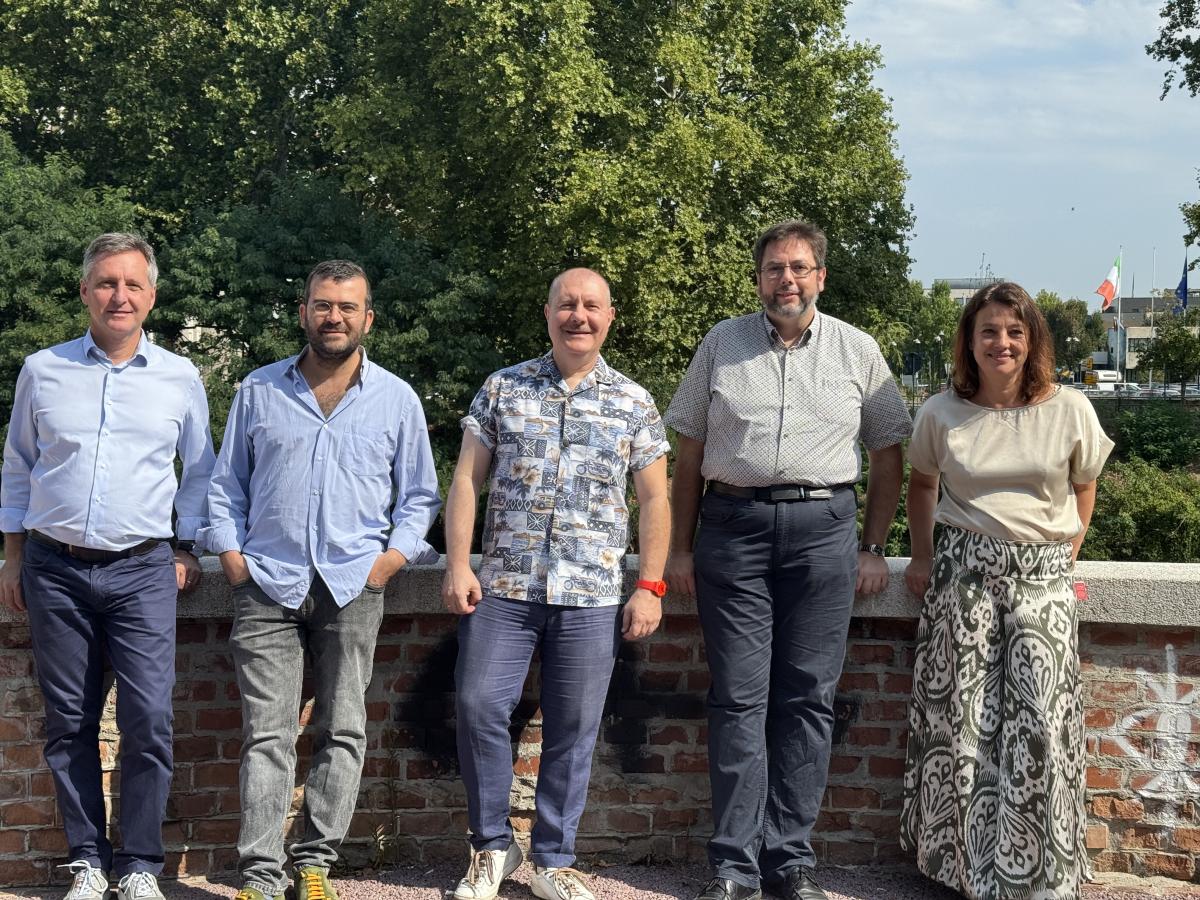
Prof. Antonino Polimeno (antonino.polimeno@unipd.it); Prof. Barbara Fresch (barbara.fresch@unipd.it); Dr. Diego Frezzato (diego.frezzato@unipd.it); Prof. Sergio Riampino (sergio.rampino@unipd.it); Prof. Mirco Zerbetto (mirco.zerbetto@unipd.it)
At TCG we develop theoretical models and computational simulations of molecular properties and reactivity. We address a wide range of physical chemistry topics, from magnetic and optical spectroscopies to the design of functional molecular structures using molecular dynamics, quantum-statistical and stochastic thermodynamics methods. We investigate also novel approaches, like machine learning techniques and quantum technologies, for theoretical and computational chemistry. Current research subjects are:
- coarse-grained description of biomolecules and supramolecular systems
- deterministic and stochastic kinetics in chemical reaction networks
- computer-guided rational design of bio inspired molecules and catalysts for applications to health and sustainability
- design of quantum nanodevices for molecular logic
- models of quantum dynamics and spectroscopic response
- Strategies to simulate dephasing-assisted quantum transport on digital quantum computers. New Journal of Physics 2022, 24, 023039.
- Effect of methylmercury binding on the peroxide reduction potential of cysteine and selenocysteine. Inorg. Chem. 2021, 60, 4646-4656.
- Stochastic modelling of C-13 NMR spin relaxation experiments in oligosaccharides. Molecules 2021, 26, 2418
- Sensitivity analysis of the reaction occurrence and recurrence times in steady-state biochemical networks. Math. Biosci. 2021, 333, 108518
- Parameter free evaluation of SN2 reaction rates for halide substitution in halometane. Phys. Chem. Chem. Phys. 2022, 24, 7474.
updated April 6th, 2022

